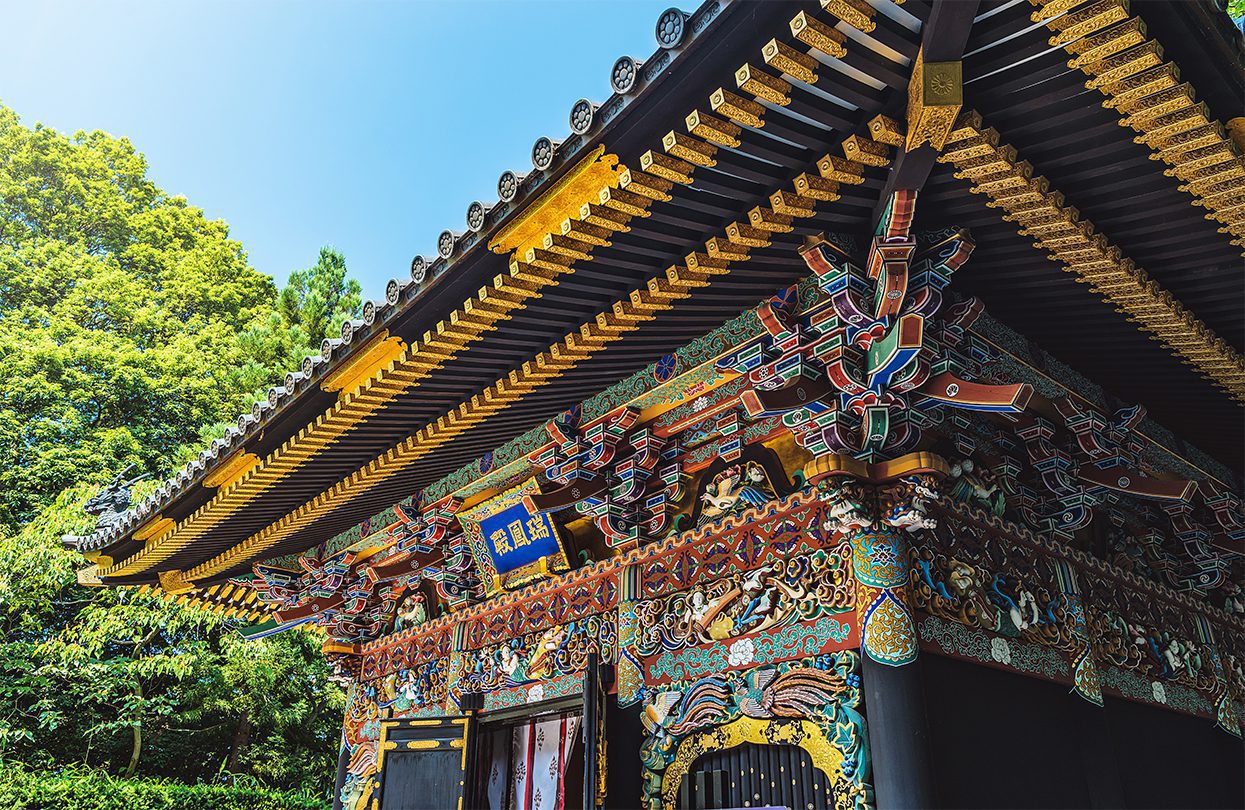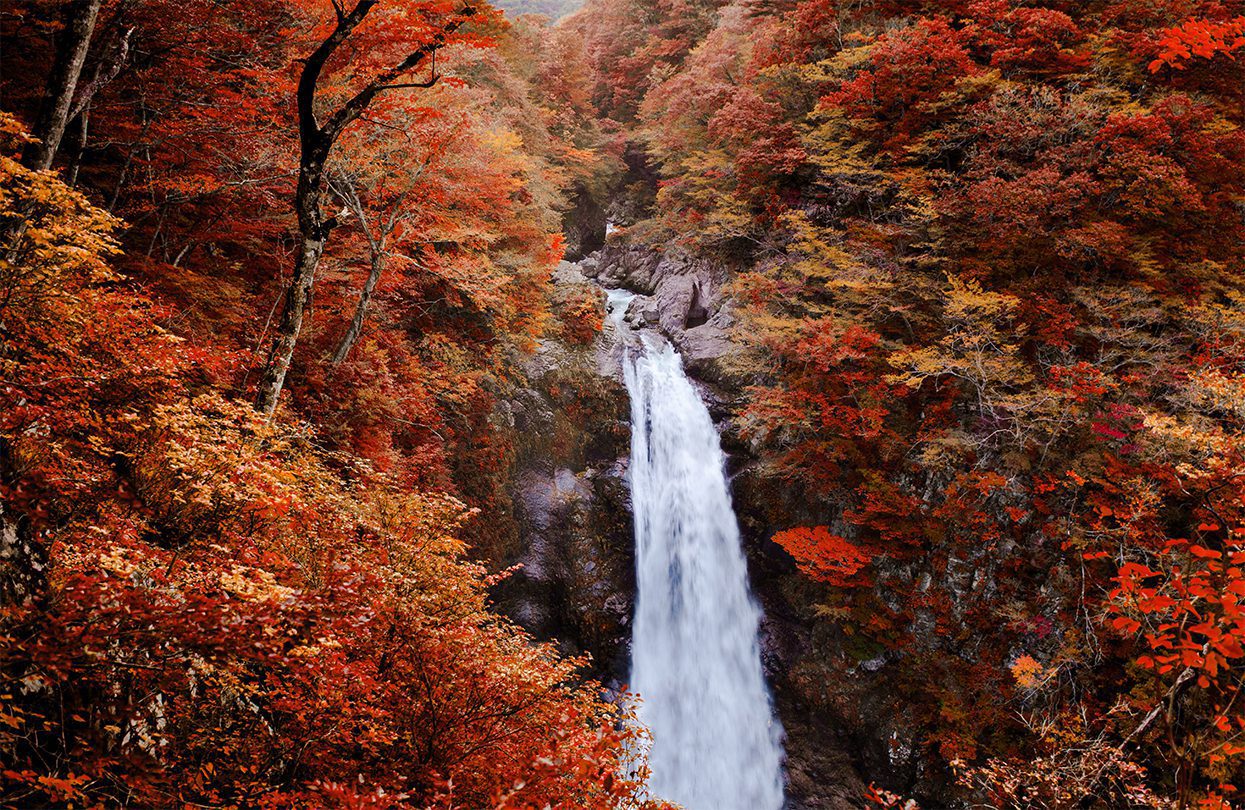[vc_row][vc_column][vc_column_text]At Jozenji-dori, rows of magnificent maple trees with branches extending to each other transform into golden canopies at the kiss of autumn. From afar, the ground is covered with the same sprinkling of gold. It is a popular landscape in Sendai, the heart of Miyagi prefecture, whose nickname City of Trees become more sound as the fall season arrives. The breath-taking foliage becomes more remarkable as backdrops of the city’s most prominent landscapes.
Zuihōden, tucked inside the heart of the metro, vibrantly contrasts the earthy colours with its elaborate gold and red motif. It is the mausoleum of the city’s founder, Date Masamune, a powerful daimyo nicknamed as the “One-Eyed Dragon.” There are vast legends about this man, but the city never forgot its roots. Despite seeing the original mausoleum crumble during World War II, Sendai rebuilt the ornate homage in 1979, complete with its elaborate furnishings, one that bears semblance to Tokugawa’s own Nikko. Sendai, without a doubt, bears an unwavering spirit–one seen by the world after the March 11, 2011 earthquake. Months after the tragedy, the city raised itself up with resilience, and now regains its standing as one of the most loved cities in Japan, with faint traces of its past struggles.[/vc_column_text][/vc_column][/vc_row][vc_row][vc_column][vc_column_text]

View of a bridge in crossing the Naruko Gorge near Sendai, Miyagi, Japan with trees with autumn color maple leaves all over the mountain in a sunny day, by Kapi Ng
[/vc_column_text][/vc_column][/vc_row][vc_row][vc_column][vc_column_text]As the gateway of the Tohoku region, Sendai possesses noteworthy trails that explore the nature-draped landscape. Matsushima is just under an hour away from the city and is known for the hundreds of forested islands that dot Matsushima Bay, showcasing the beauty of the autumn colours all across. Yamadera is a heart-stopping view of a grand temple perched on a steep mountainside, adorned with trees that seem to veil it from view. Sanriku coast, once hit by the 2011 tsunami, never lost its dramatic splendour as the Pacific waters lap against its 300 kilometres of coastline hiding countless bays, cliffs and coves.
There is magic in Sendai. Here, the urban skyline beautifully harmonises with the surrounding foliage, as if the trees are expected to bloom as lushly as their economy. The temples are respectfully preserved, still exuding their former glory, and castles are less imposing, more inviting to their guests, foreign and locals alike.[/vc_column_text][/vc_column][/vc_row][vc_row][vc_column][vc_column_text]

The Zuihoden of the Masamune Date mausoleum in Sendai city, by mTaira
[/vc_column_text][/vc_column][/vc_row][vc_row][vc_column][vc_column_text]
 Aside from exploring shrines, take a weekend jaunt at the fox village. Or, visit its collection of cute pets at an owl cafe. Dive into local dishes: imoni is popular in autumn, a blend of taro and meat soup eaten heartily with friends. Then, revel in a spread of zunda, a sweet delicacy made of green soybeans, usually turned into mochi. In October, the mesmerizing Michinoku Yosakoi Festival beckons a crowd of traditional dancers, performing in the streets. In December, Jozenji becomes a holiday haven for lovers, being lit with festoons of light.[/vc_column_text][/vc_column][/vc_row][vc_row][vc_column][vc_column_text]
Aside from exploring shrines, take a weekend jaunt at the fox village. Or, visit its collection of cute pets at an owl cafe. Dive into local dishes: imoni is popular in autumn, a blend of taro and meat soup eaten heartily with friends. Then, revel in a spread of zunda, a sweet delicacy made of green soybeans, usually turned into mochi. In October, the mesmerizing Michinoku Yosakoi Festival beckons a crowd of traditional dancers, performing in the streets. In December, Jozenji becomes a holiday haven for lovers, being lit with festoons of light.[/vc_column_text][/vc_column][/vc_row][vc_row][vc_column][vc_column_text]

Famous Akiu Waterfall in Akiu Osen with vibrant red autumn forest, Sendai by Pixhound
[/vc_column_text][/vc_column][/vc_row][vc_row][vc_column][vc_column_text]It has become easier to reach Sendai now with direct flights from Bangkok on Thai Airways flying three times a week. Starting 29th October, Thai Airways offers round trips from the golden city of Bangkok to the woodland-enveloped Sendai. Their Boeing 777-200 aircraft, with 30 elegant seats in Royal Silk class and more than 270 seats in Economy class, accommodates travelers with sublime hospitality Thai Airways is known for. For more information visit www.thaiairways.com ◼[/vc_column_text][vc_column_text]Subscribe to the latest edition now by clicking here.
© This article was first published in Oct-Nov 2019 edition of World Travel Magazine.[/vc_column_text][/vc_column][/vc_row]



